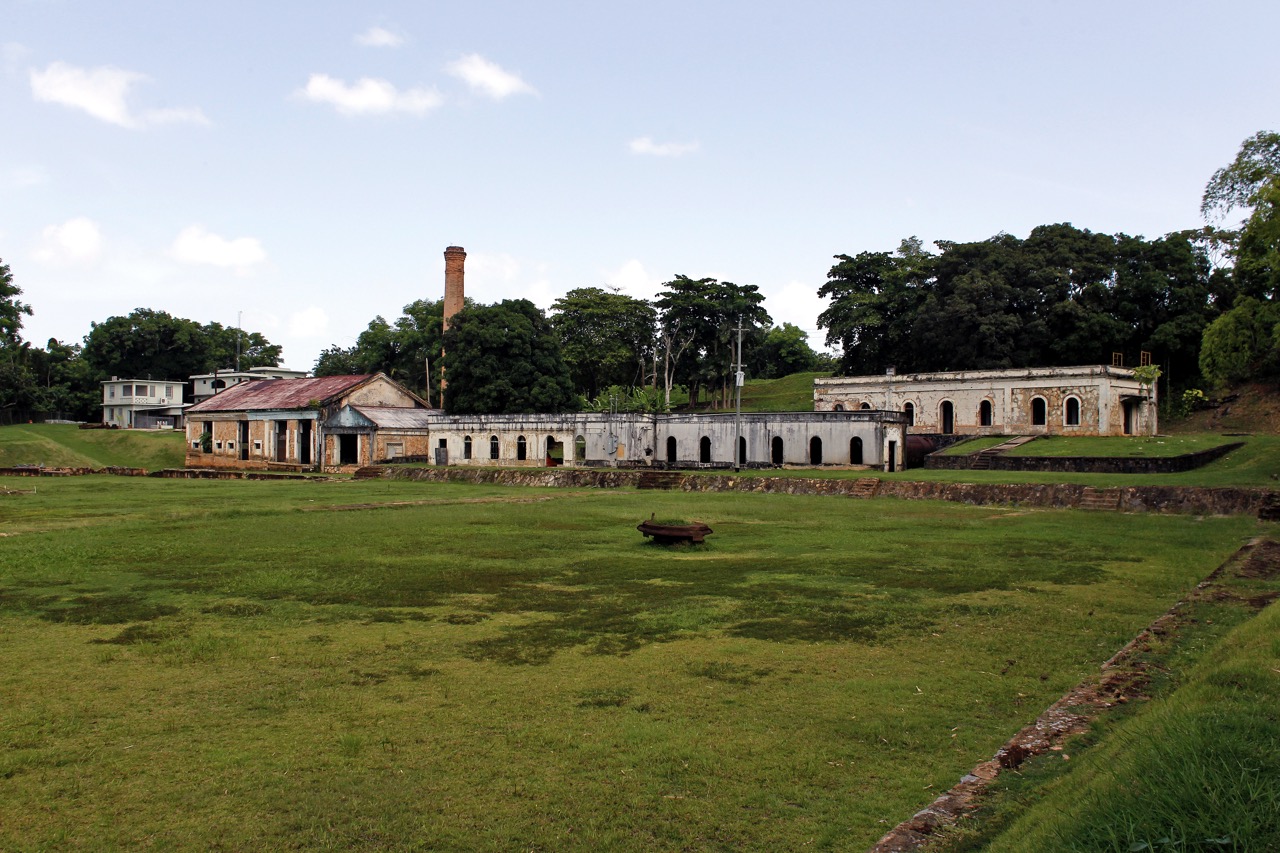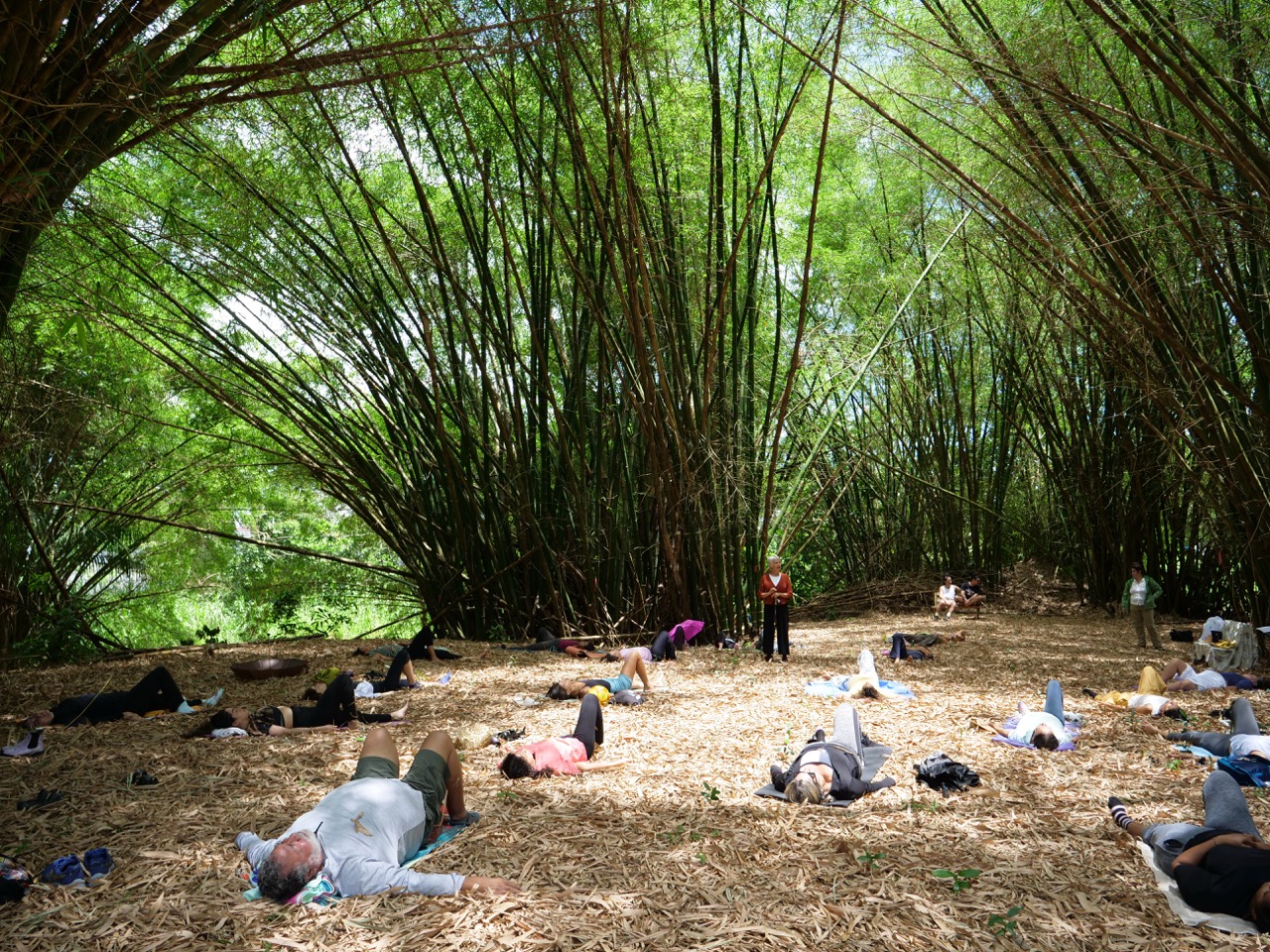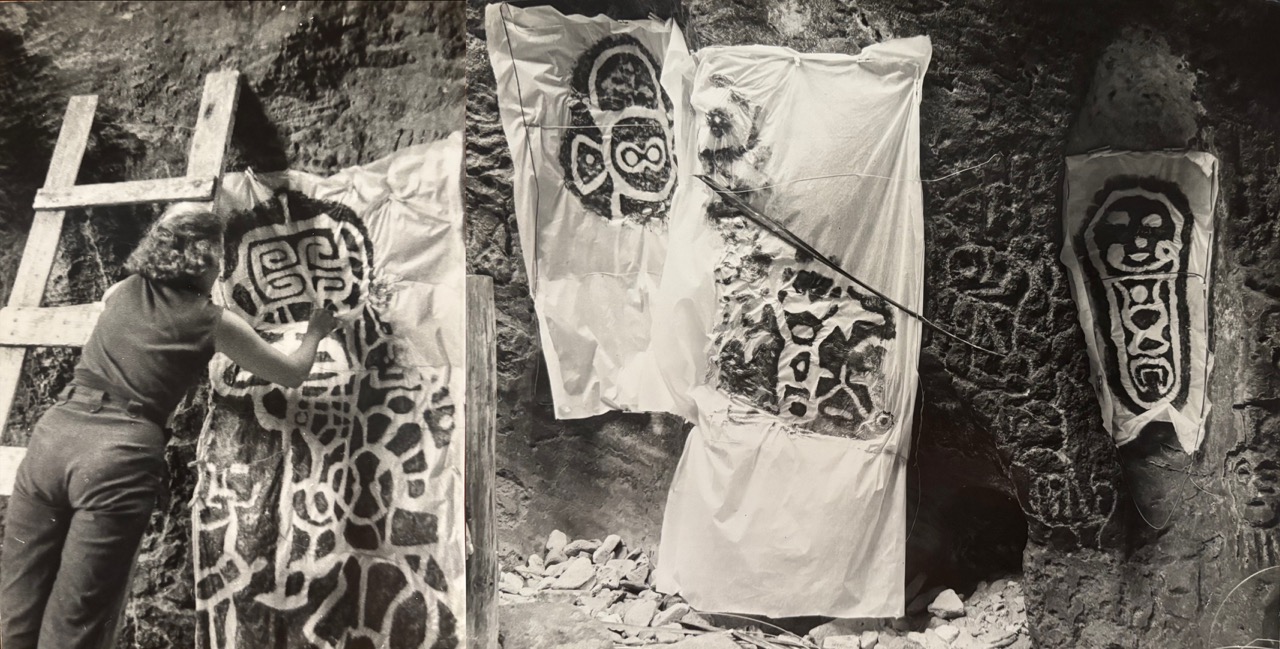Para la Naturaleza (PLN) is Puerto Rico’s largest land trust, responsible for the protection and stewardship of more than 39,000 acres of land across eighty-six sites. In 2024, PLN launched a contemporary art program led by Camila Marambio and Mauricio Marcín that integrates curatorial work into conservation, environmental justice, and decolonial practice. The curators’ new programming includes two anchor initiatives:
Casa Común (Common House) and
Territorios Vivos (Living Territories).
 Antiguo Acueducto de rio Piedras, Para la Naturaleza, San Juan. Courtesy Para la Naturaleza
Antiguo Acueducto de rio Piedras, Para la Naturaleza, San Juan. Courtesy Para la Naturaleza
 Mari Martín’s Gentile Movement workshop at Casa Común, Antiguo Acueducto de rio Piedras, Para la Naturaleza, San Juan, 2025. Courtesy Para la Naturaleza
Casa Común
Mari Martín’s Gentile Movement workshop at Casa Común, Antiguo Acueducto de rio Piedras, Para la Naturaleza, San Juan, 2025. Courtesy Para la Naturaleza
Casa Común, developed by Marcín, is an urban cultural center located at the restored nineteenth-century waterworks along the Río Piedras in San Juan. It hosts twice-monthly programs ranging from film screenings to sustainable cooking sessions to printmaking and storytelling workshops led by artists and knowledge bearers from across Puerto Rico and Latin America. Artists include Carola Cintrón, Carolina Caycedo, Jaime and Javier Suárez, Florian Dombois, and Dani Zelko. Community-led programs are rooted in ecological knowledge and cultural sovereignty, with audience development focused on the adjacent university, nearby communities, and public school students.
 Monica Flaherty, Untitled, 1957. Linen monotype of a Taíno archeological petroglyph. Collection Para la Naturaleza. Courtesy Para la Naturaleza
Territorios Vivos
Monica Flaherty, Untitled, 1957. Linen monotype of a Taíno archeological petroglyph. Collection Para la Naturaleza. Courtesy Para la Naturaleza
Territorios Vivos, led by Marambio, is a curatorial research group working in dialogue with Indigenous and Afro-descendant leaders, legal scholars, artists, and conservation scientists. The group is developing new ethical and legal guidelines for curating and exhibiting cultural patrimony from PLN’s holdings and beyond—grounded in frameworks such as rematriation and the inherent rights of nature, which challenge extractive logics and affirm reciprocal relationships with living landscapes and ancestral memory. In 2026, the group will publish their in-progress work on cultural easements. In 2027, they will debut an exhibition at El Faro in the Cabezas de San Juan Nature Preserve that focuses on the Taíno petroglyph rubbings of Monica Flaherty and explores decolonial protocols for exhibiting works related to Indigenous cultures and more-than-human kin.
Camila Marambio is Co-Director of Ecological Culture and Curator of New Perspectives at Para la Naturaleza, where she leads decolonial, transdisciplinary approaches to conservation and cultural regeneration. From 2010 to 2024, she was the founding curator of Ensayos, a long-term, collective practice across multiple archipelagos. Her projects include Cancer Ecologies: A Queer Femme Portal (Bloomsbury, 2025) and Opera Turbia, a wetland epic set to premiere at the Massachusetts Museum of Contemporary Art (MASS MoCA) in 2027. In 2022, she curated Turba Tol Hol-Hol Tol, the Chilean Pavilion at the 59th Venice Biennale, a project centered on peatland conservation and Selk’nam language revival. She has held research positions with The Museum of Modern Art (MoMA) (New York), Dia Art Foundation (New York), and the Royal Institute of Art (Stockholm), and her writing has appeared in Third Text, Terremoto, and Art+Australia. Marambio holds a PhD in Curatorial Practice from Monash University and graduate degrees from Sciences Po and Columbia University.
Mauricio Marcín is Programming and Exhibitions Specialist at Para la Naturaleza. From 2019 to 2024, he was Chief Curator at Museo de Arte Carrillo Gil (Mexico City). He also co-founded Aeromoto, a public library and gathering space with public programming. In 2022, Marcín was a cocurator of the Mexican Pavilion at the 59th Venice Biennale and co-organized El canto de la yerba bruja (The Song of the Witch’s Herb) with Michy Marxuach for MoMA. Between 2012 and 2016, he was Curator at Museo Experimental el Eco of the National Autonomous University of Mexico (UNAM) (Mexico City). He participated in the Mercosur Biennial (Porto Alegre) in 2013 and 2017, and served as Curator of El Clauselito, a project space dedicated to contemporary painting at the Mexico City Museum, from 2007 to 2012. With Annabela Tournon, Marcín edits the bilingual magazine Tada, in French and Spanish.
Published August 27, 2025.
 Antiguo Acueducto de rio Piedras, Para la Naturaleza, San Juan. Courtesy Para la Naturaleza
Antiguo Acueducto de rio Piedras, Para la Naturaleza, San Juan. Courtesy Para la Naturaleza
 Mari Martín’s Gentile Movement workshop at Casa Común, Antiguo Acueducto de rio Piedras, Para la Naturaleza, San Juan, 2025. Courtesy Para la Naturaleza
Mari Martín’s Gentile Movement workshop at Casa Común, Antiguo Acueducto de rio Piedras, Para la Naturaleza, San Juan, 2025. Courtesy Para la Naturaleza Monica Flaherty, Untitled, 1957. Linen monotype of a Taíno archeological petroglyph. Collection Para la Naturaleza. Courtesy Para la Naturaleza
Monica Flaherty, Untitled, 1957. Linen monotype of a Taíno archeological petroglyph. Collection Para la Naturaleza. Courtesy Para la Naturaleza